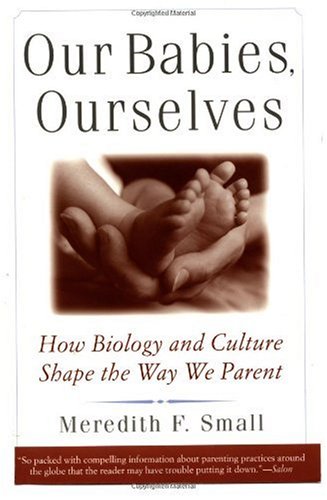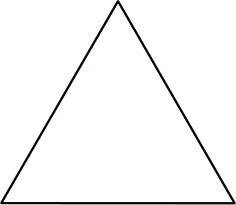Physiological Effects of Cosleeping with Infants
when they are more used to sleeping alone, sleep differently when with when they are more used to sleeping alone, sleep differently when with their mothers. The babies seem to spend a greater percentage of their sleep time in levels 1-2 and less time at the deeper levels, exhibit more REM sleep, and are awake longer. In other words, they are more often moving among sleep levels, and they sleep lighter.
Christopher Richard, Mosko, and McKenna have also found that most co-sleeping pairs spend the entire night facing each other. Even if mothers normally put their babies face down on the solitary night, they position the baby on its back or side on the co-sleeping night and instinctively in a position so that mother and baby are en face. Babies seem to know this is what they want; on the co-sleeping night, even if they are on their backs and have a choice of where to look, they move their heads to face the mother. This might, at first, seem like a potentially dangerous situation. Indeed, the researchers have shown that adult women breathe out a hazardous amount of carbon dioxide at close range, especially when a blanket forms a pocket before an adult's face. But an atmosphere of CO2 in the face might also be beneficial for infants because it changes the immediate atmospheric environment for the baby and triggers the for co-sleeping babies. Work with preterm infants has shown that skin-to-skin contact increases infant skin temperature, and since babies have trouble staying warm in cold climates this is an advantage as long as they don't get overheated. Such contact also stabilizes infant heart rate and reduces crying and sleep apneas. If nothing else, co-sleeping clearly makes for a very different external environment than sleeping alone.
p; But the most startling result of McKerma's research can be observed, even by the novice, on the videotapes. No one can miss the fact that cosleeping results in more attention by the mothers. When McKenna scored mothers' co-sleeping behaviors and compared them to what mothers did when they slept in a different room and got up at night to attend the baby, co-sleeping mothers exhibited five times the protective behaviors toward their babies. They repeatedly kissed, touched, and repositioned the baby. They readjusted blankets and comforted the baby when it fretted. And sometimes these mothers, as the polygraph showed, were not even conscious. They reached out and cuddled their offspring instinctively, keeping them from harm's way.
Co-sleeping babies, then, are under constant physical supervision, and are just a whisper, a pat, and molecule of carbon dioxide away from the person who is looking after them. Solitary babies, although fed when they cry and picked up when they whimper, never receive this kind of intimate treatment during the night.
Notes:
How cosleeping effects an infant's progression through sleep, with the mother guiding it through the cycles.
Folksonomies: infancy cosleeping attachment parenting
Taxonomies:
/family and parenting/babies and toddlers (0.640414)
/science/mathematics/statistics (0.296712)
/family and parenting/children (0.270277)
Keywords:
co-sleeping babies (0.931468 (negative:-0.046534)), co-sleeping night (0.786071 (neutral:0.000000)), co-sleeping mothers (0.703305 (neutral:0.000000)), co-sleeping pairs (0.676151 (negative:-0.225219)), co-sleeping behaviors (0.616101 (neutral:0.000000)), carbon dioxide (0.576425 (negative:-0.401138)), potentially dangerous situation (0.559207 (negative:-0.551163)), infant heart rate (0.533107 (negative:-0.660433)), skin-to-skin contact increases (0.526652 (negative:-0.441086)), immediate atmospheric environment (0.523025 (positive:0.269654)), constant physical supervision (0.512592 (neutral:0.000000)), different external environment (0.505424 (neutral:0.000000)), REM sleep (0.485350 (neutral:0.000000)), sleep time (0.471249 (neutral:0.000000)), sleep levels (0.469963 (positive:0.297655)), Solitary babies (0.441242 (negative:-0.407142)), baby (0.384370 (positive:0.275642)), greater percentage (0.374951 (neutral:0.000000)), Physiological Effects (0.368555 (negative:-0.353103)), preterm infants (0.364250 (negative:-0.441086)), deeper levels (0.364225 (neutral:0.000000)), solitary night (0.357842 (negative:-0.448310)), Christopher Richard (0.346572 (negative:-0.389781)), entire night (0.344024 (negative:-0.225219)), cold climates (0.342566 (negative:-0.399483)), startling result (0.338129 (positive:0.410393)), close range (0.336231 (negative:-0.401138)), adult women (0.334840 (negative:-0.401138)), skin temperature (0.331223 (negative:-0.441086)), protective behaviors (0.322931 (neutral:0.000000))
Entities:
carbon dioxide:FieldTerminology (0.893471 (negative:-0.401138)), McKenna:Person (0.779078 (negative:-0.225219)), heart rate:FieldTerminology (0.520373 (negative:-0.660433)), McKerma:Company (0.517288 (positive:0.410393)), Christopher Richard:Person (0.514774 (negative:-0.389781)), Mosko:Person (0.481173 (neutral:0.000000))
Concepts:
Sleep (0.945614): dbpedia | freebase | opencyc
Carbon dioxide (0.567900): dbpedia | freebase | opencyc
Infant bed (0.519552): dbpedia | freebase | yago
Infant (0.496678): dbpedia | freebase | opencyc
Co-sleeping (0.467682): dbpedia | freebase






